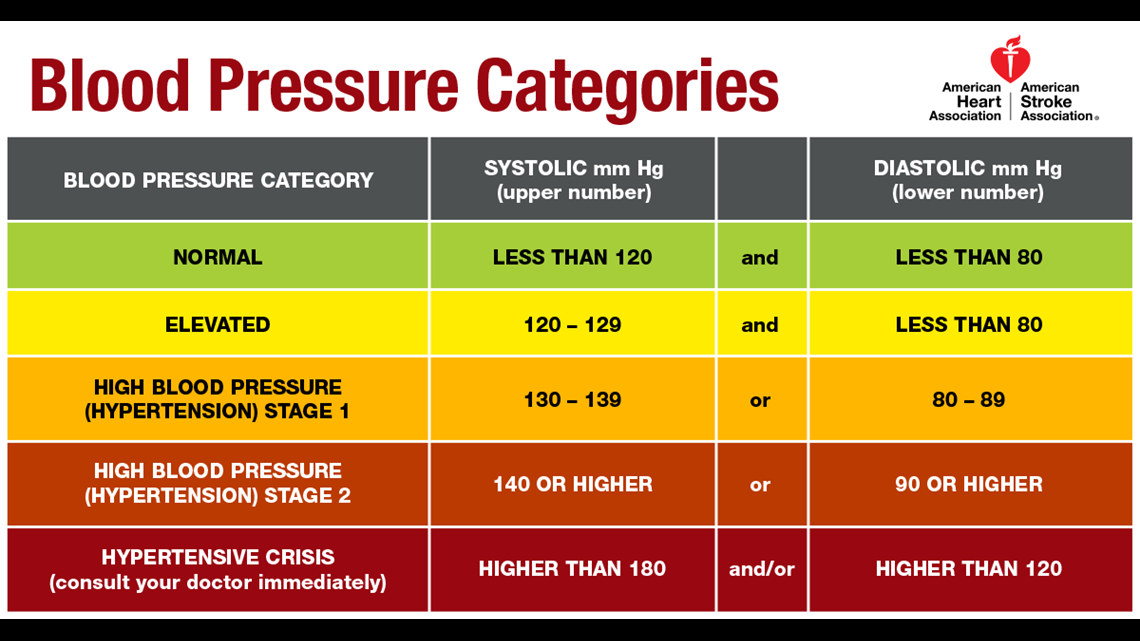ANAHEIM — Do you have high blood pressure?
According to new guidelines released Monday by the American Heart Association and the American College of Cardiology, you might.
The new guidelines define high blood pressure at 130/80 mm Hg, rather than the 140/90 threshold established in previous guidelines. As a result, nearly half the adult population of the United States is now considered to have high blood pressure, or hypertension.
But there will only be a small increase in the number of U.S. adults who will require antihypertensive medication, the guidelines’ authors said.
The new guidelines were presented at the AHA’s 2017 Scientific Sessions conference in Anaheim.
These guidelines, the first update to offer comprehensive guidance to doctors on managing adults with high blood pressure since 2003, are designed to help people address the potentially deadly condition much earlier. The new guidelines stress the importance of using proper technique to measure blood pressure.
Blood pressure levels should be based on an average of two to three readings on at least two different occasions, the authors said.
High blood pressure accounts for the second largest number of preventable heart disease and stroke deaths, second only to smoking. It’s known as the “silent killer” because often there are no symptoms, despite its role in significantly increasing the risk for heart disease and stroke.
Paul K. Whelton, M.B., M.D., M.Sc., lead author of the guidelines published in the American Heart Association journal, Hypertension and the Journal of the American College of Cardiology, noted the dangers of blood pressure levels between 130-139/80-89 mm Hg.
“You’ve already doubled your risk of cardiovascular complications compared to those with a normal level of blood pressure,” he said. “We want to be straight with people — if you already have a doubling of risk, you need to know about it. It doesn’t mean you need medication, but it’s a yellow light that you need to be lowering your blood pressure, mainly with non-drug approaches.”
Blood pressure categories in the new guideline are:


The new guidelines eliminate the category of prehypertension, which was used for blood pressures with a top number (systolic) between 120-139 mm Hg or a bottom number (diastolic) between 80-89 mm Hg. People with those readings now will be categorized as having either Elevated (120-129 and less than 80) or Stage I hypertension (130-139 or 80-89).
Previous guidelines classified 140/90 mm Hg as Stage 1 hypertension. This level is classified as Stage 2 hypertension under the new guidelines.
The impact of the new guidelines is expected to be greatest among younger people. The prevalence of high blood pressure is expected to triple among men under age 45, and double among women under 45 according to the report.
Damage to blood vessels begins soon after blood pressure is elevated, said Whelton, who is the Show Chwan professor of global public health at Tulane University School of Public Health and Tropical Medicine and School of Medicine in New Orleans.
“If you’re only going to focus on events, that ignores the process when it’s beginning,” Whelton said. “Risk is already going up as you get into your 40s.”
The guidelines stress the importance of home blood pressure monitoring using validated devices and appropriate training of healthcare providers to reveal “white-coat hypertension,” which occurs when pressure is elevated in a medical setting but not in everyday life. Home readings can also identify “masked hypertension,” when pressure is normal in a medical setting but elevated at home, thus necessitating treatment with lifestyle and possibly medications.
“People with white-coat hypertension do not seem to have the same elevation in risk as someone with true sustained high blood pressure,” Whelton said. “Masked hypertension is more sinister and very important to recognize because these people seem to have a similar risk as those with sustained high blood pressure.”
Other changes in the new guideline include:
- Only prescribing medication for Stage I hypertension if a patient has already had a cardiovascular event such as a heart attack or stroke, or is at high risk of heart attack or stroke based on age, the presence of diabetes mellitus, chronic kidney disease or calculation of atherosclerotic risk (using the same risk calculator used in evaluating high cholesterol).
- Recognizing that many people will need two or more types of medications to control their blood pressure, and that people may take their pills more consistently if multiple medications are combined into a single pill.
- Identifying socioeconomic status and psychosocial stress as risk factors for high blood pressure that should be considered in a patient’s plan of care.
The new guidelines were developed by the American Heart Association, American College of
Cardiology and nine other health professional organizations. They were written by a panel of 21
scientists and health experts who reviewed more than 900 published studies.



